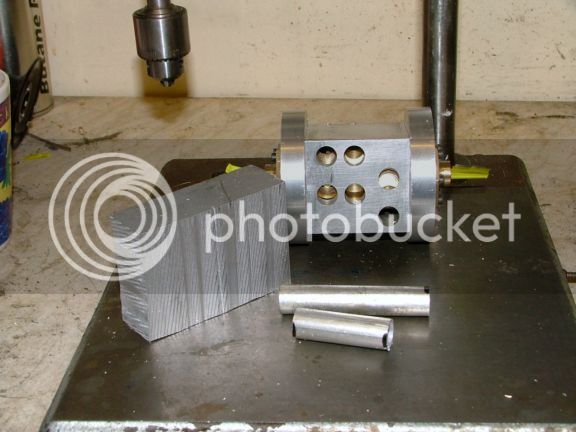vederstein
Must do dumb things....
- Joined
- Feb 26, 2011
- Messages
- 917
- Reaction score
- 744
For a project of mine, I need a small engine to run a small fan to blow soap bubbles. Therefore I whipped up small steam turbine for this purpose.
At the time of this writing, I have no idea of its performance. I'll find out when I build it.
Please note that the steam inlet is design to work with steam, not compressed air. The ø1/16 passageway expands to ø1/8". The idea is for the steam to expand before it impacts the turbine bucket.
If you attempt this machine and plan on running it on compressed air, just drill ø1/16" through.
Also, though not shown in the drawings, I intend the steam inlet to be pressed into the housing and then machine out the pocket so the .564 radius of the steam inlet and the bore of the housing are exactly the same.
Enjoy...
Ved.

View attachment Assy - Turbine.pdf
View attachment Axle.pdf
View attachment Housing.pdf
View attachment Rotor Cover.pdf
View attachment Rotor.pdf
View attachment Steam Inlet.pdf
At the time of this writing, I have no idea of its performance. I'll find out when I build it.
Please note that the steam inlet is design to work with steam, not compressed air. The ø1/16 passageway expands to ø1/8". The idea is for the steam to expand before it impacts the turbine bucket.
If you attempt this machine and plan on running it on compressed air, just drill ø1/16" through.
Also, though not shown in the drawings, I intend the steam inlet to be pressed into the housing and then machine out the pocket so the .564 radius of the steam inlet and the bore of the housing are exactly the same.
Enjoy...
Ved.

View attachment Assy - Turbine.pdf
View attachment Axle.pdf
View attachment Housing.pdf
View attachment Rotor Cover.pdf
View attachment Rotor.pdf
View attachment Steam Inlet.pdf








